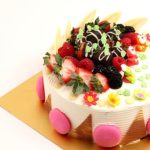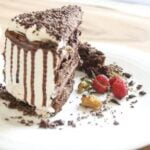Decorating a cake is not just an art form but also a science, particularly when it comes to timing. One crucial question that often arises is: how long can you decorate a cake after frosting it? The answer to this question can significantly impact the outcome of your final creation. In this article, we will explore the importance of timing in cake decorating, providing insights into the ideal window for adding those intricate details that make your cake truly special.
When it comes to frosting a cake, timing is everything. From ensuring the frosting sets properly to allowing enough time for decorations to adhere seamlessly, every minute counts. Understanding the process of frosting a cake is essential before delving into the nuances of decorating it. A step-by-step guide on achieving that perfect smooth finish sets the stage for successful decoration later on.
Before grabbing your piping bag or sprinkles, there are several factors to consider that can influence how long you should wait before decorating. Factors such as temperature, the type of frosting used, and even the design of the cake play a significant role in determining the ideal time frame for decoration. By taking these elements into account early on, you set yourself up for a smoother decorating experience later on.
The Process of Frosting a Cake
When it comes to frosting a cake, following a step-by-step guide can make all the difference in achieving a perfectly frosted and decorated masterpiece. Begin by ensuring that your cake layers are completely cooled before starting the frosting process. If the layers are still warm, the frosting can melt and cause a messy appearance.
Next, prepare your frosting of choice. Whether you’re using buttercream, cream cheese frosting, ganache, or any other variety, make sure it’s at the right consistency for spreading. If it’s too stiff, try adding a small amount of milk or cream to soften it up. On the other hand, if it’s too runny, add more powdered sugar to thicken it.
To begin frosting the cake, start with a crumb coat-a thin layer of icing that seals in any loose crumbs. This will create a smooth base for the final layer of frosting. Use an offset spatula to apply the crumb coat evenly around the entire cake. Once the crumb coat is in place, refrigerate the cake for about 15-30 minutes to allow the icing to set before applying the final layer of frosting.
| Timing | Ideal Frosting Type |
|---|---|
| Buttercream Frosting | 15-30 minutes after crumb coat |
| Cream Cheese Frosting | 30-45 minutes after crumb coat |
| Ganache | 10-15 minutes after preparing |
Factors to Consider Before Decorating
When it comes to decorating a cake after frosting it, there are several important factors to consider to ensure the best results. One of the key aspects to take into account is the temperature of both the cake and the frosting. The ideal scenario for decorating a cake is when both the cake and frosting are at room temperature.
This ensures that the frosting spreads smoothly and evenly on the cake without causing any lumps or bumps. If the cake is too warm, it can cause the frosting to melt and slide off, while if it’s too cold, the frosting may not adhere properly.
Another crucial factor to take into consideration is the type of frosting you are using. Different types of frostings have varying textures and consistencies, which can affect how long you have before they set and become difficult to work with.
For example, buttercream frosting typically sets quickly, so you’ll need to work fast when decorating your cake after applying this type of frosting. On the other hand, cream cheese frosting tends to stay soft for longer periods, giving you more time to perfect your decorations.
Additionally, the design of your cake plays a significant role in determining how long you can wait before decorating it after frosting. Intricate designs or complex patterns may require more time and precision when decorating, so it’s essential to plan ahead and allow yourself enough time to execute your vision.
Simple designs like smooth finishes or basic piping work may not require as much time, but it’s still important to consider how long each specific design element will take to complete accurately. By taking these factors into account beforehand, you can ensure a successful and stress-free cake decorating experience.
- Consider room temperature for both cake and frosting
- Awareness of different types of frostings’ setting times
- Factor in complexity of design for appropriate timing
How Long Can You Wait Before Decorating
When it comes to decorating a cake after frosting it, timing is crucial to achieving the perfect finish. Knowing how long you can wait before decorating is essential to ensure that your decoration adheres smoothly and stays intact. The ideal time frame for decorating a cake after frosting it can vary depending on the type of frosting used. Here is a breakdown of the recommended time frames based on different types of frosting:
- Buttercream Frosting: Buttercream frosting is a popular choice for cake decorating due to its smooth texture and versatility. After applying buttercream frosting, it is best to wait approximately 15-30 minutes before starting to decorate. This allows the frosting to set slightly while still being tacky enough for decorations to adhere easily.
- Fondant Frosting: Fondant is a thicker and more pliable type of frosting that provides a smooth and polished finish to cakes. For fondant-covered cakes, you can start decorating almost immediately after applying the fondant. The initial stickiness of the fondant will help decorations such as edible pearls or sugar flowers stay in place.
- Cream Cheese Frosting: Cream cheese frosting has a creamy and tangy flavor that pairs well with various cake flavors. When using cream cheese frosting, it is recommended to wait around 10-20 minutes before decorating the cake. This allows the frosting to firm up slightly without becoming too hard.
Understanding how long you can wait before decorating a cake after frosting it can make a significant difference in the overall outcome of your creation. By following these guidelines based on different types of frosting, you can ensure that your decorations stay put and look stunning on your finished cake. Remember, patience is key when it comes to achieving professional-looking results in cake decorating.
Tips for Successful Cake Decorating
Cake decorating is both a science and an art that requires precision, patience, and creativity. To achieve a flawless finish on your cake, it is essential to have the right tools, master various techniques, and employ some tricks of the trade.
One of the most common questions that arise in cake decorating is how long can you decorate a cake after frosting it? The answer to this question depends on several factors, including the type of frosting used and the design complexity of the cake.
When it comes to successful cake decorating, having the right tools is crucial. Some essential tools for decorating a cake include offset spatulas for smooth frosting application, piping bags and tips for adding intricate designs or writing, turntables for easy maneuvering while decorating, and a bench scraper for achieving clean edges. Additionally, having a variety of fondant cutters, molds, stencils, and edible decorations can help elevate the overall look of your cake.
In terms of techniques, it is important to practice good crumb coating before applying the final layer of frosting to prevent crumbs from showing through. Smooth out the frosting using long strokes with an offset spatula or bench scraper to create an even surface. When piping decorations or writing on the cake, maintain consistent pressure on the piping bag for uniform lines.
To add dimension and texture to your design, consider using different piping tips or edible embellishments. Mastering these techniques will ensure a professional-looking finish on your decorated cake.
| Tool | Function |
|---|---|
| Offset Spatula | Smooth frosting application |
| Piping Bags and Tips | Adding intricate designs or writing |
| Turntable | Easy maneuvering while decorating |
| Bench Scraper | Achieving clean edges |
Effects of Waiting Too Long to Decorate
When it comes to cake decorating, timing is crucial. Knowing how long you can wait before decorating a cake after frosting it can make a significant difference in the outcome of your confection. If you delay too long, there can be some serious consequences that may affect the overall appearance and taste of your cake.
Effects on Texture
If you wait too long to decorate a cake after frosting it, the texture of the frosting may change. Depending on the type of frosting used, it could harden, develop a crust, or become too stiff to work with. This can make it challenging to create smooth and clean designs on the surface of the cake. Additionally, waiting too long may also affect the moisture level of the cake itself, leading to a dry and less flavorful end result.
Impacts on Flavor
Another consequence of decorating a cake too late after frosting is the potential impact on flavor. Over time, especially if left uncovered or exposed to air for an extended period, the flavors of the cake and frosting may start to diminish or even develop off-flavors. Freshness is key in ensuring that your cake tastes as delicious as it looks, so procrastinating too long on decoration could result in a less appetizing final product.
Difficulty in Design
Beyond texture and flavor concerns, waiting too long to decorate a frosted cake can also make it harder to achieve intricate designs or special effects. Some decorations may require wet frosting as an adhesive or base for sprinkles, edible pearls, or fondant accents.
If the frosting has already set or dried out by then, these embellishments might not adhere properly or stay in place as intended. Planning ahead and timing your decorating process appropriately is essential for executing your vision flawlessly.
Common Mistakes to Avoid When Decorating a Cake
When it comes to decorating a cake, timing is crucial to ensure a successful and visually appealing result. One common mistake that many amateur bakers make is not considering how long they can wait before decorating the cake after frosting it. So, just how long can you decorate a cake after frosting it? This section will delve into some key pointers to help you avoid disasters and achieve a beautiful presentation when decorating your cakes.
Rushing the Process
One of the most common mistakes when decorating a cake is rushing the process. After frosting your cake, it’s important to allow enough time for the frosting to set before adding any decorations. Depending on the type of frosting used, this can range from 15 minutes to an hour or more. Rushing this step can result in your decorations sliding off or smudging, ultimately ruining all your hard work.
Not Considering Temperature
Temperature plays a significant role in how long you can wait before decorating a frosted cake. If your kitchen is too warm, the frosting may start to soften and slide off the cake before you even get a chance to decorate it. On the other hand, if it’s too cold, the frosting may harden too quickly, making it challenging to add decorations smoothly. Finding the ideal temperature for your specific frosting type is essential for successful cake decorating.
Choosing the Wrong Tools and Techniques
Another mistake to avoid when decorating a cake is using inappropriate tools and techniques. Whether it’s not having the right piping tips for intricate designs or using improper methods for applying edible glitter or fondant accents, choosing the wrong tools and techniques can lead to disappointing results. Take some time to research and practice different decorating tools and methods beforehand to ensure your cake turns out beautifully decorated.
Creative Cake Decorating Ideas
When it comes to decorating a cake, the possibilities are truly endless. Whether you’re looking to create a simple, elegant design or a whimsical, elaborate masterpiece, there are countless creative cake decorating ideas to explore. One popular trend in cake decorating is incorporating different themes into your designs. From floral arrangements and nature-inspired motifs to abstract shapes and patterns, themed cakes can set the tone for any occasion.
One way to draw inspiration for your cake designs is to consider the event or celebration you’re baking for. For weddings, consider creating a tiered cake with delicate sugar flowers and intricate piping details. For children’s birthdays, opt for bright colors, playful shapes, and fun character figurines. Graduations, baby showers, holidays – each event can be reflected in the design of your cake through thoughtful decorations that speak to the theme.
Another way to get creative with cake decorating is by experimenting with different techniques and tools. Try using fondant to sculpt detailed figures or shapes, or explore the art of buttercream painting for a one-of-a-kind look.
Piping tips come in various sizes and styles, allowing you to achieve everything from fine lines and intricate lace patterns to bold rosettes and ruffles. Don’t be afraid to push your skills and challenge yourself with new techniques – you may just discover a hidden talent for cake decorating.
The key to successful cake decorating lies not only in your technical skills but also in your ability to think outside the box and let your imagination run wild. Take inspiration from everyday objects, art movements, fashion trends – anything that sparks your creativity.
Play around with different color palettes, textures, and finishes to bring your vision to life on top of that frosted canvas. Remember: there’s no right or wrong when it comes to creativity, so don’t be afraid to take risks and try something new in every decoration project you embark on.
Conclusion
In conclusion, timing is crucial when it comes to decorating a cake after frosting it. The success of your cake decoration largely depends on finding the right balance between waiting for the frosting to set and starting the decorating process at the optimal time. Whether you are using buttercream, ganache, or fondant, knowing how long you can wait before decorating is key to achieving a professional-looking finish.
It is recommended to wait for about 15-30 minutes after frosting a cake before starting the decoration process. This allows the frosting to firm up slightly, making it easier to work with while still being pliable enough for embellishments. However, different types of frosting may require varying wait times, so it’s essential to consider the specific characteristics of the frosting you are using before diving into decorating.
Remember, patience is key when it comes to cake decorating. Rushing into decorating too soon can lead to smudged designs and messy finishes, while waiting too long can cause decorations to crack or not adhere properly. By understanding the ideal timing for decorating a cake after frosting it and following the tips and techniques outlined in this article, you can ensure a successful and visually appealing end result for your masterpiece.
Frequently Asked Questions
How Far in Advance Can I Decorate a Cake With Buttercream Icing?
The timing for decorating a cake with buttercream icing depends on various factors such as the type of buttercream used, the storage conditions, and the design complexity. In general, it is recommended to decorate a cake with buttercream icing no more than 1-2 days in advance to ensure freshness and quality.
How Long Does a Cake Last After Frosting?
The shelf life of a cake after frosting largely depends on the type of frosting used, storage conditions, and the ingredients in the cake itself. Generally, when stored properly in an airtight container in the refrigerator, a frosted cake can last anywhere from 3-5 days.
However, certain types of frosting may cause the cake to become soggy or dry out quicker.
How Far Ahead Can You Decorate a Cake?
It is best to decorate a cake closer to when it will be served to ensure that it remains fresh and visually appealing. Ideally, you can decorate a cake 1-2 days in advance if using buttercream icing and simple decorations.
More intricate designs or decorations may need to be completed closer to serving time to prevent any potential issues with colors bleeding or designs fading.

Welcome to my blog about home and family. This blog is a place where I will share my thoughts, ideas, and experiences related to these important topics. I am a stay-at-home mom with two young children. I hope you enjoy reading it! and may find some helpful tips and ideas that will make your home and family life even better!





